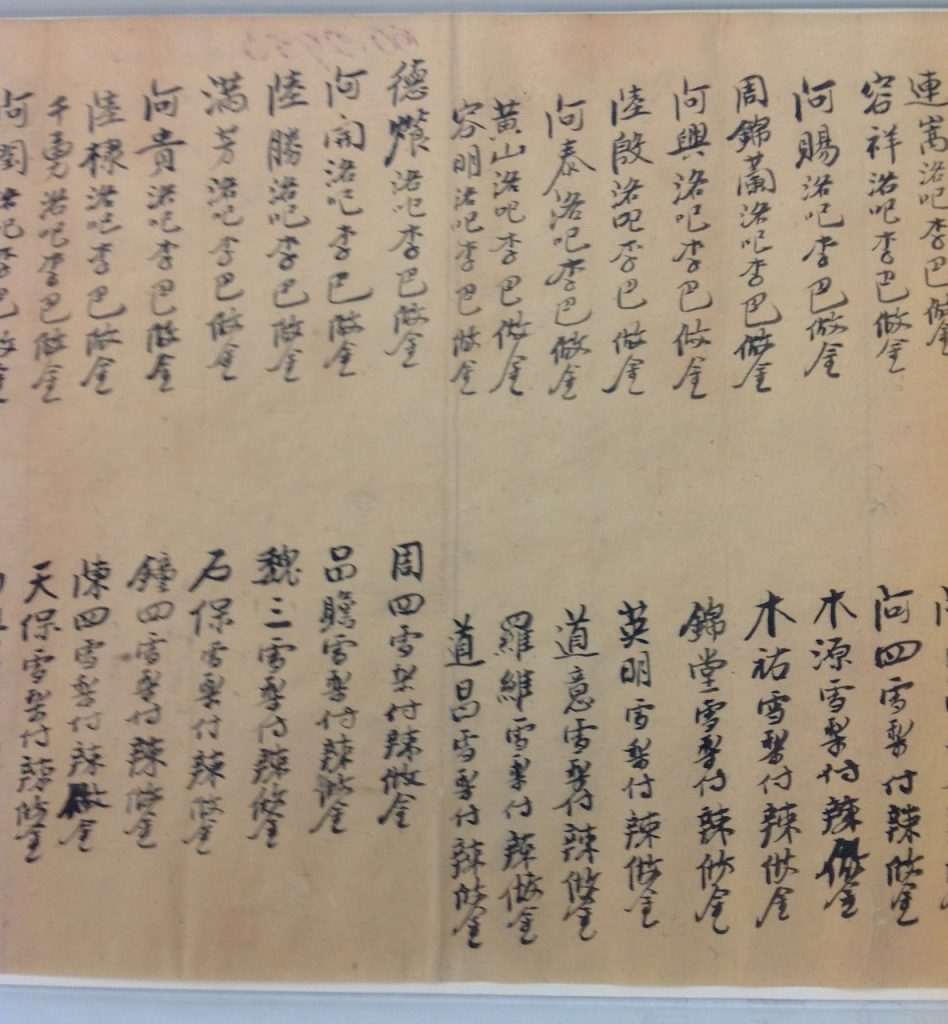
The many Chinese men who joined the Victorian and NSW goldrushes of the 1850s are often seen merely through the lens of other gold seekers – mainly from Britain – who also came to try their luck. The difference being that those originating within the politically dominant Empire were possessed with a sense of “ownership” of the freshly expropriated Australian continent that allowed them to label Chinese goldminers (without irony) as “foreigners” and thus “unfair” competition. The much retold (albeit exaggerated) Lambing Flat riots of 1860 becomes a key event with this perspective. (See No.47)

Nevertheless, history moves on and is filled with more than the occasional riot. The object here is in a sense the opposite of a riot, a petition presented by the many Chinese goldminers and shopkeepers of Rocky River (now Uralla) in 1866. The purpose of this was to request the continuation of Gold Commissioners at Rocky River that signatories affirmed they had great confidence in. The Gold Commissioners were the NSW Governments answer to disturbances on the goldfields and they often intervened to arbitrate various disputes. However, with most goldfields in decline and conflicts lessening a cost cutting exercise by the NSW government planned to eliminate these specialists and turn their powers over to local magistrates.

This petition did not save the Gold Commissioners and in November 1866 the Chinese miners on Rocky River presented departing Commissioner Addison with a ‘gold hunting watch’. The inscription read in part, ‘Presented’ … ‘by Ah Why and 200 Chinese gold diggers’. (See No.9) The petition – in Chinese with an accompany English version – and signed not individually but by a single writer is an example of the gold seekers from China adapting and working within the local society – including its high level of racism – as best they could.
This Rocky River petition was by no means the first – that of 1856 presented to the Victorian Legislative Assembly with over 5,000 signatures in protest at the colonial government introducing a poll tax and tonnage restriction aimed solely at Chinese people was.[1] With another petition complaining of the impact of these laws followed in 1858.[2] In the same year as the Rocky River petition the Chinese residents of another NSW gold mining town, Sofala, petitioned on behalf of Bah Fook who they regarded as having been wrongly convicted.[3] A similar petition in 1873 at nearby Tambaroora for the release of Chee Loy is also to be found in the NSW State Archive.[4]
All of these as well as numerous posters and placards that have not survived were in Chinese script and tell a story of non-English speakers communicating with English-speaking authorities. Of course, this prominent if much discriminated against group did not remain non-English speaking nor did they limit themselves to not often successful appeals to government. In 1879 a group of Chinese Australian businessmen published The Chinese Question in Australia, 1878-79 by L. Kong Meng, Cheok Hong Cheong, Louis Ah Mouy in an effort to appeal directly to the peoples of Australia over issues of increasing discrimination. Unsuccessful as they were in the short-term their arguments resonate today with the majority of Australians.
See also:
For more on the NSW petitions see: Juanita Kwok, The Chinese in Bathurst: Recovering Forgotten Histories, Doctoral thesis, Charles Sturt University, Bathurst, 2018.
For an historically accurate and nuanced account of the Lambing Flat history (to read) or an excellent presentation (to watch): Lambing Flat: Memory, Myth and History.
Another of interest: The Birth of White Australia?
For a short history of the Rocky River goldfields
[1] PROV, VPRS 3253/P0, Unit 32.
[2] PROV, VPRS 1189/P0, Unit 502, no. 898. For details of these petitions see Anna Kyi, ‘“The most determined, sustained diggers’ resistance campaign”:Chinese protests against the Victorian Government’s anti-Chinese legislation 1855-1862’, Provenance: The Journal of Public Record Office Victoria, issue no. 8, 2009.
[3] NSW State Archives: Colonial Secretary’s Correspondence, NRS 905 [66/1430] 4/577, Memorial of Inhabitants of Sofala Re Bah Fook, 1866.
[4] NSW State Archives: Colonial Secretary’s Correspondence, NRS 905. [1/2228] 73/5223 enclosed in 73/6969, The Petition of Chee Loy of Tambaroora, 1873.

